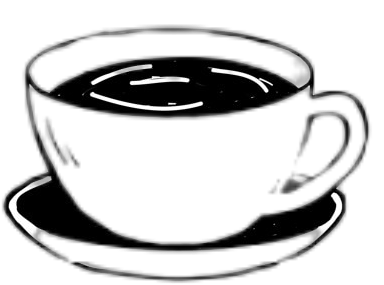As a passionate coffee enthusiast, few things are as disappointing as pulling an espresso shot only to find it’s under-extracted. That thin, sour taste lacking the richness of a well-pulled espresso can leave you frustrated. But don’t worry—I’ve been there too. After a lot of trial and error, I’ve picked up some key insights to help fix under-extracted espresso.

What is Under Extraction?
Before jumping into solutions, it’s important to understand what under extraction means. Essentially, under extraction happens when water moves too quickly through the coffee grounds, not giving it enough time to pull out all the desirable flavors. The result? A sour, weak espresso that feels like it’s missing something. For a better understanding of how different machines handle extraction, check out our Philips 5500 LatteGo Review, Philips 5400 LatteGo Review, and a comparison of the Philips LatteGo 5400 vs 4300. These reviews can help you understand how variations in machines affect the extraction process.
Here’s how to identify under-extracted espresso:
- Sour or acidic taste: That sharp, unpleasant tang is a sign.
- Thin texture: A good espresso should feel rich and syrupy. If it’s watery, it’s likely under-extracted.
- Pale crema: A thin, pale crema often points to under extraction.

Now that we know what the problem is, let’s explore how to fix it by focusing on several key factors that influence espresso extraction.
1. Dial in the Grind Size
One of the most important factors is grind size. Espresso requires a fine grind, but if it’s too coarse, water passes through too quickly, leading to under extraction.
I learned early on that even the slightest adjustment to the grind size can make a huge difference. If your shot is tasting sour, the first thing to do is grind your coffee finer. This increases the surface area exposed to the water, allowing for better extraction of flavors.
Pro Tip: Adjust your grinder one notch at a time, and test each shot. You’ll know you’re getting close when the sourness fades and the espresso starts to taste more balanced.
2. Tweak Your Brew Ratio
Another factor to consider is the brew ratio—the balance between the amount of coffee grounds and the water used. A standard espresso ratio is 1:2, meaning 18 grams of coffee should yield about 36 grams of espresso. If you’re getting under-extracted shots, it might be due to using too little coffee or too much water.
I found that increasing the coffee dose slightly can really improve flavor extraction. Alternatively, you can reduce the final espresso yield to concentrate the flavors.
If you haven’t already, I highly recommend using a scale to measure both the coffee and the water. This precision will help you consistently dial in your shots.
3. Optimize Water Temperature
Water temperature is another critical variable. If the water is too cool, it won’t fully extract the coffee’s flavors, leading to that sour taste. The ideal temperature for brewing espresso is between 195°F and 205°F (90°C to 96°C).
When I discovered my espresso machine wasn’t reaching a high enough temperature, I noticed it was contributing to under-extracted shots. If your machine doesn’t have an adjustable temperature setting, make sure it’s thoroughly warmed up before pulling a shot.
4. Master Your Tamping Pressure
Tamping is the process of compressing the coffee grounds in the portafilter before pulling a shot. If you tamp too lightly, the water will flow through too fast, leading to under extraction. Conversely, if you tamp too hard, it could cause over-extraction.
I didn’t realize how important this step was until I practiced tamping consistently. Aim for about 30 pounds of pressure to create an even, flat surface for the water to pass through.
Pro Tip: To get a feel for 30 pounds of pressure, practice tamping on a bathroom scale. Once you’ve mastered the feel, your tamping will become more consistent.
5. Adjust the Shot Time
Shot time is another important factor in achieving the perfect extraction. Ideally, an espresso shot should take between 25 and 30 seconds to pull. If it takes less than 20 seconds, the shot is likely under-extracted.
To slow down the shot, consider grinding finer, increasing the coffee dose, or tamping with a bit more pressure. Small adjustments here can make a big difference in the final result.
6. Use Fresh Coffee Beans
Lastly, don’t overlook the freshness of your beans. Stale coffee beans can lead to a flat, under-extracted espresso no matter how perfect your technique is. Coffee beans start to lose their flavor shortly after roasting, so make sure you’re using beans that have been roasted within the last two weeks.
I didn’t realize how much of an impact fresh beans could make until I switched from older beans to freshly roasted ones. The difference was night and day—fresh beans yield much more flavorful espresso.
Conclusion: Achieving the Perfect Shot
Fixing under-extracted espresso is all about fine-tuning your process—whether it’s dialing in the grind size, adjusting the brew ratio, optimizing water temperature, or refining your tamping pressure. It can seem tricky at first, but with practice, you’ll start to understand how each factor affects your shot. If you're looking for further insights, you can explore a comparison of Philips 3200 vs 4300 vs 5400, or see how the Philips 3200 vs 4300 and Philips 3200 vs 5400 models perform in different espresso conditions.
Instead of being discouraged by sour espresso, look at it as an opportunity to improve. With small adjustments and patience, you’ll be pulling rich, balanced espresso shots that rival even your favorite café. Happy brewing!
